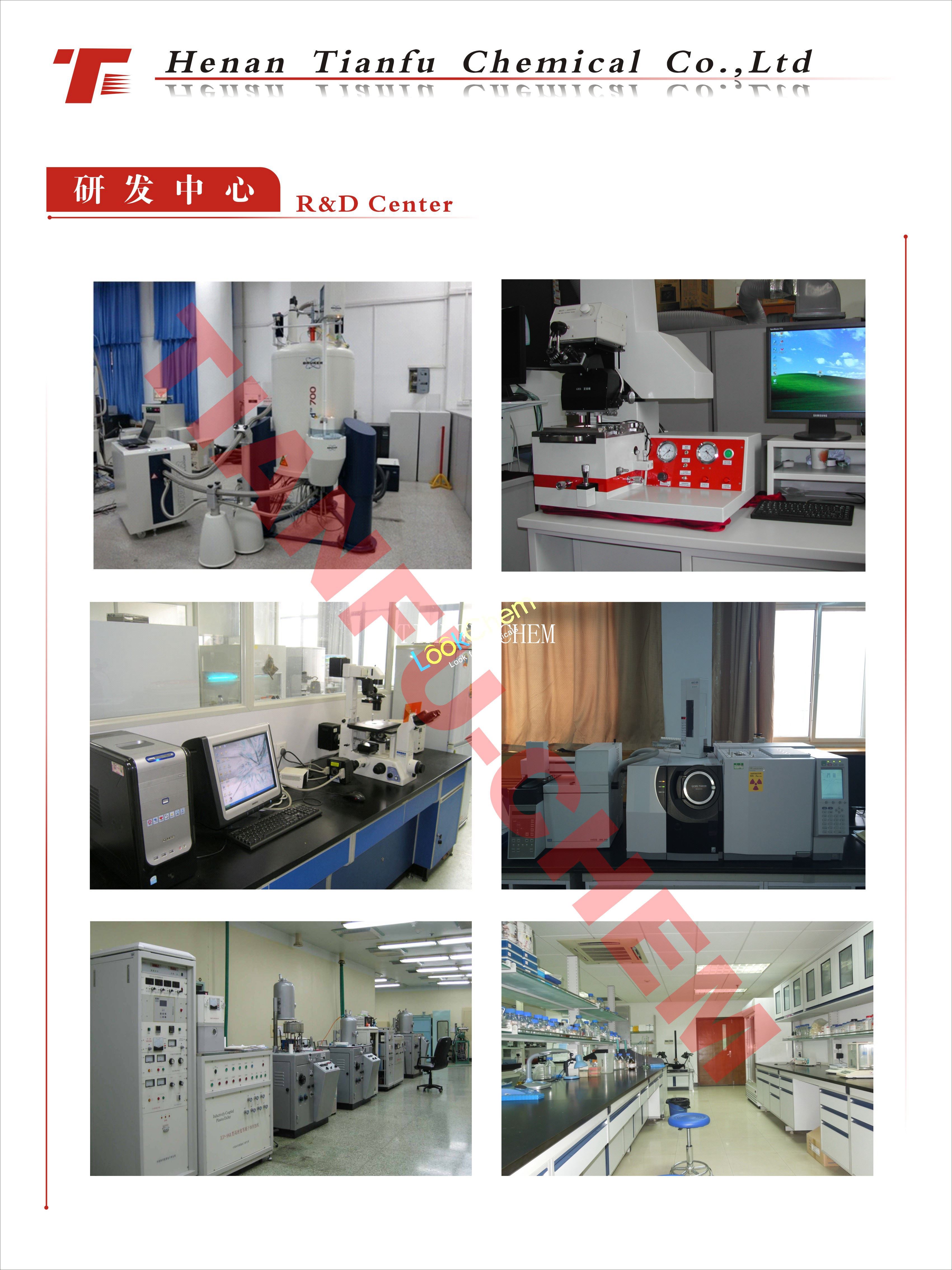- Min.Order :1 Kilogram
- Purity: 99%
- Payment Terms : L/C,T/T
Keywords
941678-49-5 Ruxolitinib C17H18N6
Quick Details
- Appearance:white powder
- Application:pharma
- PackAge:as clients needs
- ProductionCapacity:1|Metric Ton|Day
- Storage:RT
- Transportation:sea
Superiority:
Our company was built in 2009 with an ISO certificate.In the past 6 years, we have grown up as a famous fine chemicals supplier in China and we had established stable business relationships with Samsung,LG,Merck,Thermo Fisher Scientific and so on.Our main business covers the fields below:
1.Noble Metal Catalysts (Pt.Pd...)
2.Organic Phosphine Ligands (Tert-butyl-phosphine.Cyclohexyl-phosphine...)
3.OLED intermediates (Fluorene,Carbazole,Boric acid...)
4.Customs Synthesis
Our advantage:
1. Higest quality and good package
2.Fast delivery
3.Better payment term
4.Fast response to customer within 6 hours
5.Good business credit in Europe ,US ,Japan ,Korea
Anyway ,if you need any chemicals from China ,Henan Tianfu can help you

Details:
Ruxolitinib Chemical Properties
density 1.40
CAS DataBase Reference 941678-49-5
Safety Information
MSDS Information
Ruxolitinib Usage And Synthesis
Pharmacological effects Myelofibrosis (MF) is a rarely-occurring disease of myelodysplastic disorders. It is caused by the replacement of in vivo bone marrow by scar tissue, leading to the production of blood cells in the liver and spleen and other organs, which is characterized by splenomegaly, anemia, leukopenia, and thrombocytopenia, and different degrees of bone sclerosis. Symptoms include fatigue, abdominal discomfort, pain under the ribs, muscle and bone pain, itching and night sweats.
Ruxolitinib is the first oral medication approved by the US Food and Drug Administration (FDA) for the treatment of myelofibrosis. It is a small-molecule inhibitor of the tyrosine kinase (namely, JAK1 and JAK2) and is suitable for the treatment of intermediate or high-risk myelofibrosis, including primary myelofibrosis, post-polycythemia Vera myelofibrosis and post essential thrombocythemia myelofibrosis.
August 29, 2012, the EU has approved the first drug for the treatment of myelofibrosis, ruxolitinib. Ruxolitinib can be used for the treatment of intermediate or high-risk myelofibrosis, including primary myelofibrosis, post-polycythemia Vera myelofibrosis and post essential thrombocythemia myelofibrosis. Currently, ruxolitinib has been approved by more than 50 countries around the world, including the EU, Canada and some Asian, Latin American and South American countries.
US Novartis has obtained authorization from Incyte Company of the development and commercialization right of Ruxolitinib outside the United States. The European Commission and the FDA have both granted the status of Ruxolitinib as the orphan drug in the treatment of myelofibrosis. Currently, Incyte has sold it under the trade name Jakafi in the United States for the treatment of intermediate or high-risk myelofibrosis.

You Might Also Like
-
25377-73-5 DODECENYLSUCCINIC ANHYDRIDE
CAS NO:25377-73-5
-
High Quality N,N'-(decane-1,10-diyldi-1(4H)-pyridyl-4-ylidene)bis(octylammonium) dichloride Octenidine dihydrochloride 70775-75-6
CAS NO:70775-75-6
-
High Quality Diethyl malonate 105-53-3 In Stock Supply
CAS NO:105-53-3
-
2378-02-1 PERFLUORO-TERT-BUTANOL 99%
CAS NO:2378-02-1
-
2926-29-6 Sodium trifluoromethanesulfinate 99%
CAS NO:2926-29-6
-
CAS 621-27-2 3-N-PROPYLPHENOL
CAS NO:621-27-2
Related Searches
About|Contact|Cas|Product Name|Molecular|Country|Encyclopedia
Message|New Cas|MSDS|Service|Advertisement|CAS DataBase|Article Data|Manufacturers | Chemical Catalog
©2008 LookChem.com,License: ICP
NO.:Zhejiang16009103
complaints:service@lookchem.com Desktop View